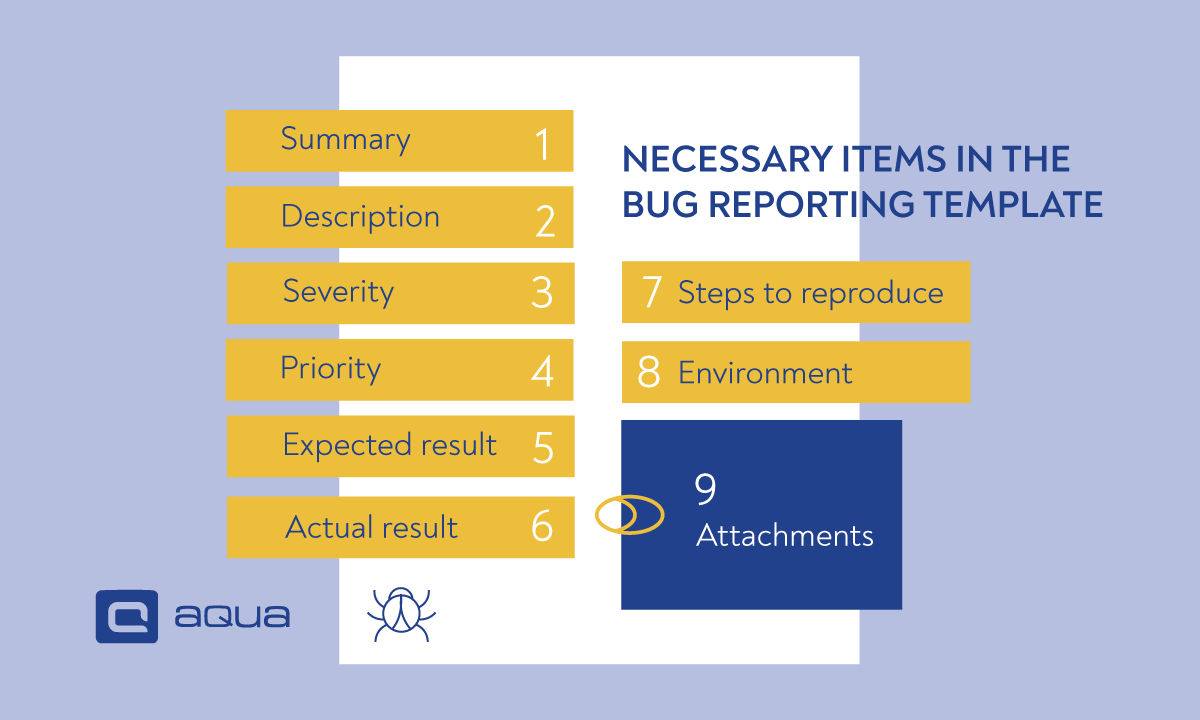
Are you tired of delays in fixing the bugs because of the incomplete bug report you wrote? Writing a good bug report is overwhelming, especially when managing multiple tasks simultaneously. But what if we told you there is a solution that will help you streamline your bug-reporting process and make it more efficient?

A good bug report template will significantly impact your QA process. It ensures that all the necessary information is in the report, helps to standardise the bug-reporting process, and saves you time and effort in the long run.
In this article, we will provide you with a free bug report template that will alleviate your struggles and improve your QA process.
Before we dive into the step-by-step process of creating a bug-tracking template , let’s review the essential items in the bug report. The following are the most critical elements to include in a template:
Among the items above, it is important to be able to differentiate these two: priority and severity. When creating a bug report template, it’s important to include fields for both. These fields may not be filled out by the person filing the bug report, as they may not have a full understanding of the impact or priority of the issue. In such cases, it is up to the development team to assess and assign severity and priority levels to each reported bug.
It’s also crucial to understand the difference between severity and priority. While they are often used interchangeably, they have distinct meanings. Severity refers to the impact that a bug has on the user experience and/or business, while Priority refers to the urgency or importance of addressing the issue. A high-severity bug may not necessarily have the highest priority if other severe bugs must be addressed first.
By including severity and priority in the bug report template separately, teams can ensure that they assess and prioritise issues appropriately. This can help streamline the bug-fixing process and ensure that the most critical issues are addressed first.

If you’re looking for an easier way to report bugs and streamline your QA process, Capture is the solution for you. With Capture, you can easily record videos, take screenshots, and annotate them to provide developers with clear and concise bug reports. Plus, it automatically includes system information, console logs, and network information. You have all the data if you can’t reproduce the issue or the person reporting the bug does not know how to collect it.
Start saving time and money on bug reporting
Creating a template for an organisation is a crucial step towards standardisation and streamlining operations. A template not only provides a consistent structure but also ensures that critical information is captured accurately and in a standardised format. You should know the essential items that a template should include, how to create rules and automated checks to ensure that mandatory fields are filled out, and how to integrate the template into the software used by the organisation.
Now that you know what should be included in the bug report template in software testing , let’s move on to the steps to get the maximum out of it.
To improve collaboration between QA professionals and developers, you might also consider using issue tracking software . Good bug-tracking software will help you create customisable bug reports and make the entire software development process smoother. It will save you time and improve efficiency to achieve the best results.
Here is a sample of a bug-reporting template you can copy and use for your own QA process:
"Reminds me of the awesome bug report I saw once: 'Everything is broken. Steps to reproduce: do anything. Expected result: it should work'".
Felipe Knorr Kuhn, Software EngineerA well-written bug-reporting template can become an essential component of an effective QA process. Using the standardised format, you can ensure you capture all relevant information, which will help the development team track and resolve the issues efficiently. When designing your template, be sure to include all the necessary elements mentioned in this article. Additionally, you can consider customising your template to suit your team’s specific needs and requirements.
The ultimate goal of a bug report template in software testing is to ensure better communication between QA and dev teams, find the issues in time and resolve them quickly to deliver a high-quality end product. So why not take a giant step toward streamlining your QA processes?
Consider trying aqua. With expert defect tracking, REST API support, unlimited ticket capacity, and frequent feature updates, aqua is the all-in-one solution for a seamless testing experience. With aqua’s AI assistant, you can streamline your testing efforts by automatically creating test cases from requirements, removing duplicates, and prioritising essential tests for maximum impact.
Don't miss out on the chance to revolutionise your testing efforts